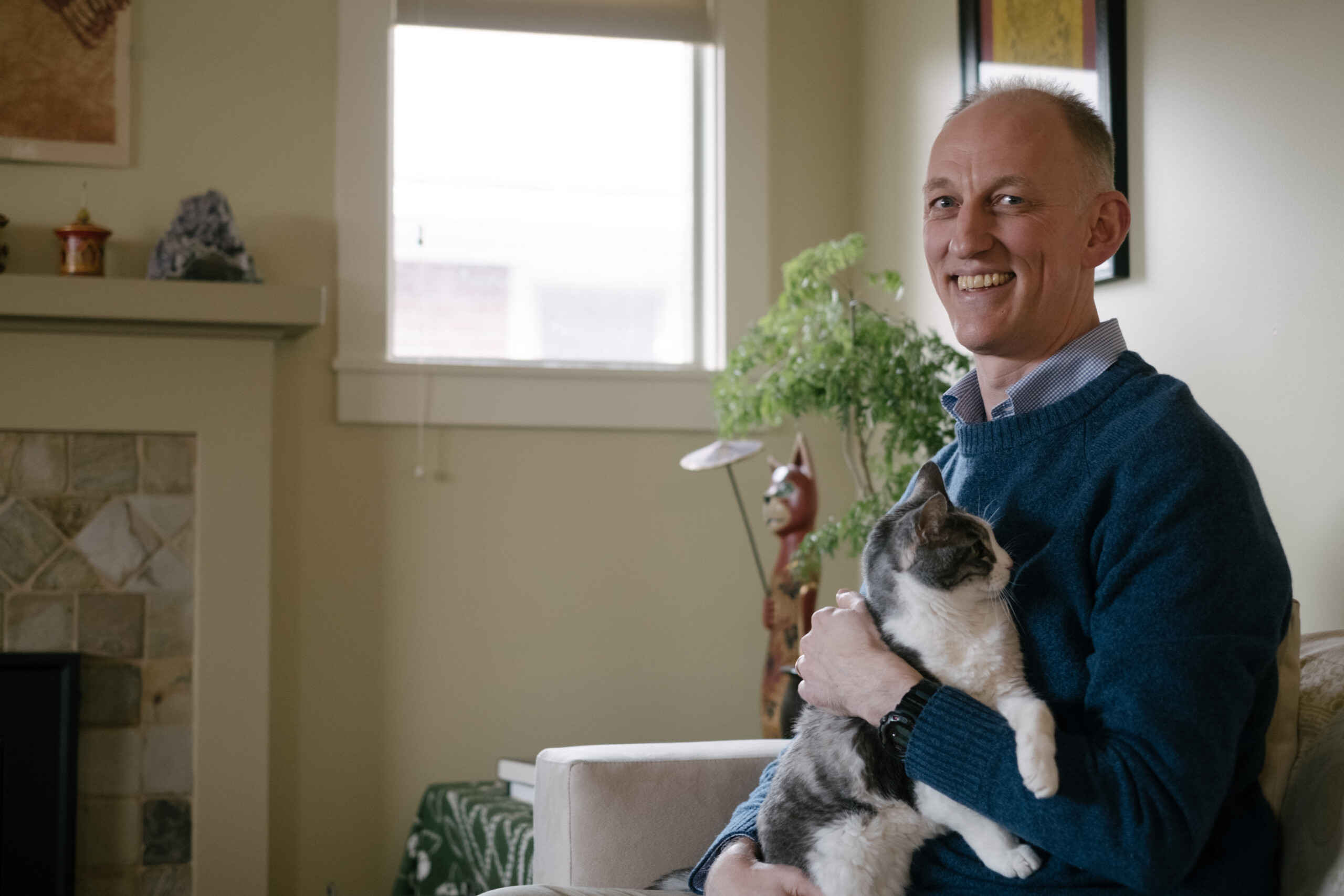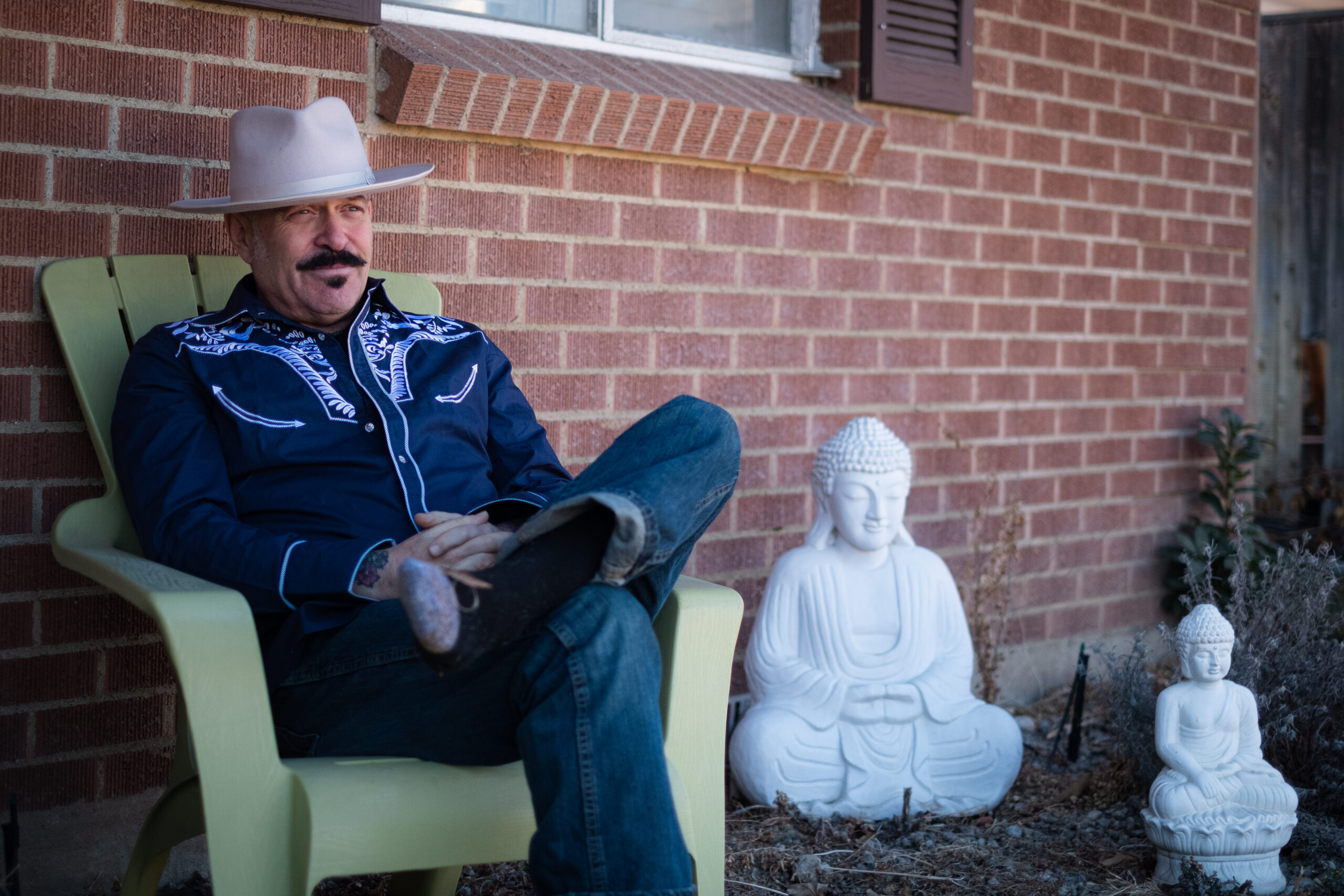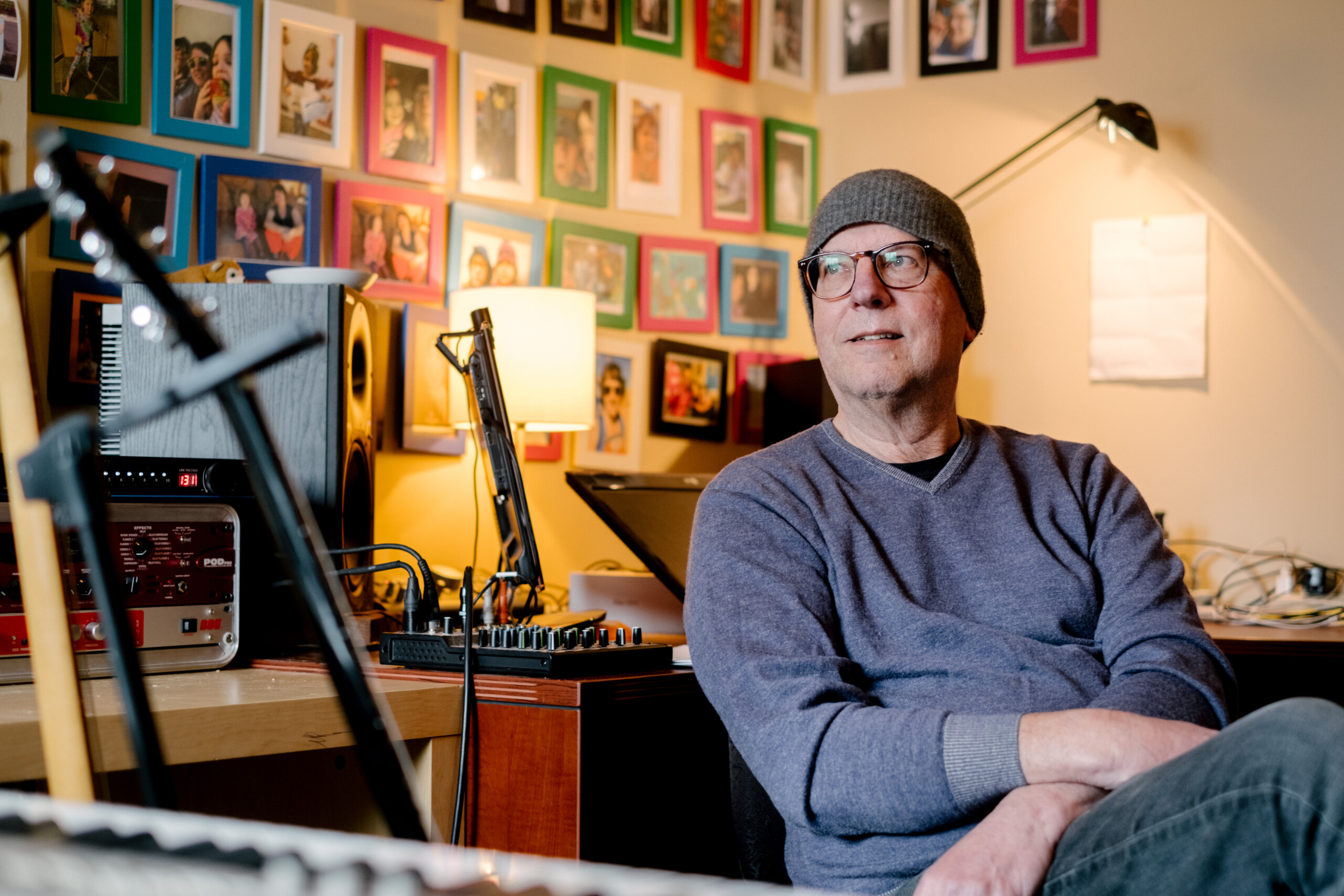Gou Yuan Fa Shi
Guo Yuan Fashi is a Buddhist monk trained in Chan Buddhism. In 1985 he first encountered Master Sheng Yen’s teachings while attending a seven-day retreat in New York. He then decided to become a disciple before finally leaving his job in Toronto, Canada, to become a monk in the Chan tradition. He was ordained in 1987 in Taiwan. For over twenty years, he accompanied and became translator to Master Sheng Yen in various Chan meditation retreats in the United States, the United Kingdom, Germany, Switzerland, Russia, and Mexico.
Joe
Well, first of all, when I was young, I was I was interested in Zen. And, you know, interestingly, there's a connection between music and Buddhism for me because my very first violin teacher, he was interested in Zen Buddhism. And, and so he would he would sometimes say a few things. He was really amazing guy just, you know, really talented in so many areas of, kind of kind of a genius type. Um, and, um, yeah. So, you know, based on that, I thought, oh yeah, that sounds like a really cool thing. So I explored a little bit, right, a little bit when I was young, you know, Zen and the Art of Motorcycle Maintenance. I love that.
Shinge Roshi
Shinge Roko Sherry Chayat Roshi is abbot of the Zen Studies Society’s mountain monastery, Dai Bosatsu Zendo Kongo-ji, and New York City temple, New York Zendo Shobo-ji, and is also abbot of the Zen Center of Syracuse Hoen-ji in Syracuse, NY.
Christopher
So my my spiritual journey, I started the Salt Lake Buddhist Fellowship about almost nine years ago after reading a book called River of Fire River of Water. And it was interesting because I had picked up the book off of the used bookshelf many times before. It had put it down, put it down, put it down. And then one day it just picked it up and read it. And it was pretty transformative, even though I didn’t I even though I didn’t buy everything in the book, like hook, line and sinker and like, Oh, this is Nirvana and this is what I wanted.
Bruce
I would go to bookstores and actually the first book a guy recommended to me was, um, Sex, Spirituality and Ecology by Ken Wilber. And it's a thick, rough going read, right? But I dove into it and it just kind of really opened me up and I thought, okay, I'm going to go further. And I started reading other stuff of his and of course he talks about Buddhism and the relative and the absolute and, you know, these kind of things in there. And one thing led to another. I picked up a book by showing him Trungpa, uh, spiritual materialism, I think it was. And I read two or three of his others, uh, and then I found a book by Sylvia and became the Tibetan Book of Living and Dying, and which is written in even more plain English than Trump was even.
Michael
Michael delved into Eastern traditions, studying with various teachers, including a yoga master who deeply influenced him. Becoming a certified yoga teacher and massage practitioner, he aimed to help others recognize the unseen energies that influence mind and body. Encountering Buddhist teachings, specifically in the Vajrayana tradition, Michael delved into understanding the nature of the mind and one's true self. The teachings prompted him to question the nature of perception and explore the interplay between thought and reality. The Buddhist tradition became a guide for settling the mind and recognizing one's absolute identity. Encountering Buddhist teachings, specifically in the Vajrayana tradition, Michael delved into understanding the nature of the mind and one's true self. The teachings prompted him to question the nature of perception and explore the interplay between thought and reality. The Buddhist tradition became a guide for settling the mind and recognizing one's absolute identity.
Dennis
Dennis, sharing his perspective as a Zen teacher, emphasizes the role of a teacher as a guide rather than a source of enlightenment. He dismisses the notion of seeking renowned teachers, emphasizing that the individual must undertake the journey to understanding and enlightenment.
Reflecting on his diverse religious background, Dennis acknowledges his limitations in certain faiths but draws from his experiences to relate to students. He recognizes the inability to eradicate pain or serve as a substitute for professional help in cases of emotional trauma, distinguishing the teacher’s role from that of a counselor.
Highlighting the individuality of teachers, Dennis asserts that there is no prescribed mold for their approach. Encouragement emerges as a crucial aspect of his role, especially in leadership positions. He understands the challenges of the Zen path, stressing the importance of perseverance and encouraging practitioners to stay committed despite potential difficulties. Ultimately, Dennis sees the teacher’s primary role as providing support and motivation on the challenging journey towards enlightenment.
Grace
Grace emphasizes the importance of having multiple teachers in the one Buddhism tradition, highlighting the diversity of perspectives they offer. Teachers in this tradition serve as guides, providing direction while allowing individuals to make their own decisions. Grace values the mentorship that encourages her to trust herself, believe in her potential, and pursue her mission.
The process of finding a teacher in one Buddhism involves prayer and a personal connection rather than a systematic approach. Grace shares her experience of seeking a teacher she resonates with, emphasizing the role of readiness on the part of the student. She notes the lack of a formal system for teacher selection in the tradition but believes that, with time, practitioners naturally encounter teachers with whom they connect.
Grace acknowledges that the one Buddhism tradition is relatively young in the West, with about 50 years of history, and currently faces a shortage of ministers and teachers. She expresses hope that the establishment of headquarters in the United States and the development of a teaching system will lead to an increase in teachers in the future. Grace also introduces the concept of “wise one first,” where anyone with expertise in a specific field can become a teacher in that domain, fostering a continual sense of being both a student and a teacher.
Gareth
Gareth delves into the complexity of choosing a spiritual teacher, expressing his admiration for Joseph Goldstein but recognizing the challenges of forming a personal connection with a renowned figure. He emphasizes the need for a teacher-student relationship built on intimacy and genuine understanding, as opposed to a transactional dynamic. Gareth, anticipating the establishment of a “One Dharma Atlanta,” underlines the importance of personal context in guiding individuals on their spiritual journey.
Discussing the deepening of one’s practice, Gareth emphasizes the universal foundation of stopping and seeing, asserting their fundamental role in various traditions. He emphasizes his commitment to staying well-versed in multiple traditions to effectively guide others. Gareth acknowledges the necessity of maintaining his own practice and undertaking personal retreats to remain grounded and useful in guiding others.
Gareth underscores the significance of versatility in understanding diverse teachings and limitations in his role, highlighting the importance of listening to individual needs. He emphasizes the role of a teacher as a mirror, helping students uncover deeper questions and providing guidance along their unique paths. Gareth acknowledges the challenges in the West, where financial constraints impact teachers, but also sees an opportunity for students to express commitment through support.
The discussion pivots to the nuanced concept of commitment in the teacher-student relationship. Gareth reflects on the personal nature of this commitment and the financial aspect, acknowledging the importance of a student’s commitment to their practice. He grapples with the ambivalence surrounding the term “student” and underscores the necessity for a genuine commitment to foster deeper intimacy and facilitate spiritual growth.
Christopher
Christopher shares his approach to teaching within the Buddhist tradition, emphasizing the concept of spiritual friendship rather than formal teacher-student relationships. He draws inspiration from the Bright Dawn Way of One Buddhism, highlighting the teachings of influential figures such as Igaruguru and Reverend José Cobo Say. Reflecting on the transformative power of studentship, Christopher explores the shift in perspective from seeing the Buddha as a teacher to recognizing the Buddha as a devoted student, displaying humility and a commitment to learning.
The narrative delves into the experiences of Enron Shinran, a dedicated priest in the ten-day tradition, who left and started a Pure Land-focused practice. Christopher appreciates the emphasis on foolish being and humility in Shinran’s teachings, contrasting this with some challenges observed in American Buddhist teachers who claim high levels of awakening. He acknowledges the authenticity and vulnerability in embracing one’s delusion and openly walking the path of self-improvement, drawing parallels between his journey and the teachings of Shinran.
Christopher shares the communal practice in his fellowship, encouraging a spirit of openness and vulnerability among practitioners. He underscores the importance of acknowledging imperfections and embracing the journey together, emphasizing the value of freedom from the need to be perfect. Christopher reflects on his evolving role, initially seeking the title of Sensei for credibility but later embracing the title of friend, emphasizing that the essence lies in being a mirror rather than a perfect teacher.
He highlights the paradox of awakening, emphasizing the interdependence of individuals on the path, drawing support from Bodhisattvas and the Buddha. Christopher expresses hope that the positive lessons learned in their community will extend beyond to friends, families, and children, creating a ripple effect of positive karma.
Christopher reflects on the challenges and expectations placed on spiritual teachers, drawing from his experience with Reverend Coyote, who established the Bright Dawn Way of Oneness to carry on his father’s legacy. While acknowledging the frustration and human aspects of his teacher, Christopher questions the relevance of personal flaws to the teachings of the Dharma, emphasizing that being human is separate from embodying the Dharma.
He observes a Western tendency to place teachers on a pedestal with unrealistic expectations, possibly stemming from historical clergy abuses and inherent issues within the priest-congregation relationship. Christopher explores the dichotomy of Westerners following spiritual leaders while claiming belief in science, illustrating the complexity of these relationships.
Referencing figures like Trungpa, Christopher appreciates certain teachings while critiquing aspects like spiritual materialism, emphasizing the need for continual self-awareness. He expresses personal comfort with the idea of a guru or roshi, referencing figures like Honan, Shimron, and Sato Suzuki Roshi. However, he recognizes that the guru-roshi relationship doesn’t align with their fellowship’s tradition, encouraging individuals to find what works for them.
Christopher shares his personal journey toward accepting the concept of the salvific Buddha, acknowledging the place for seeking salvation and highlighting the importance of critical examination. He stresses the significance of legitimate and exemplary teachers, cautioning against getting caught up in trivial matters.






